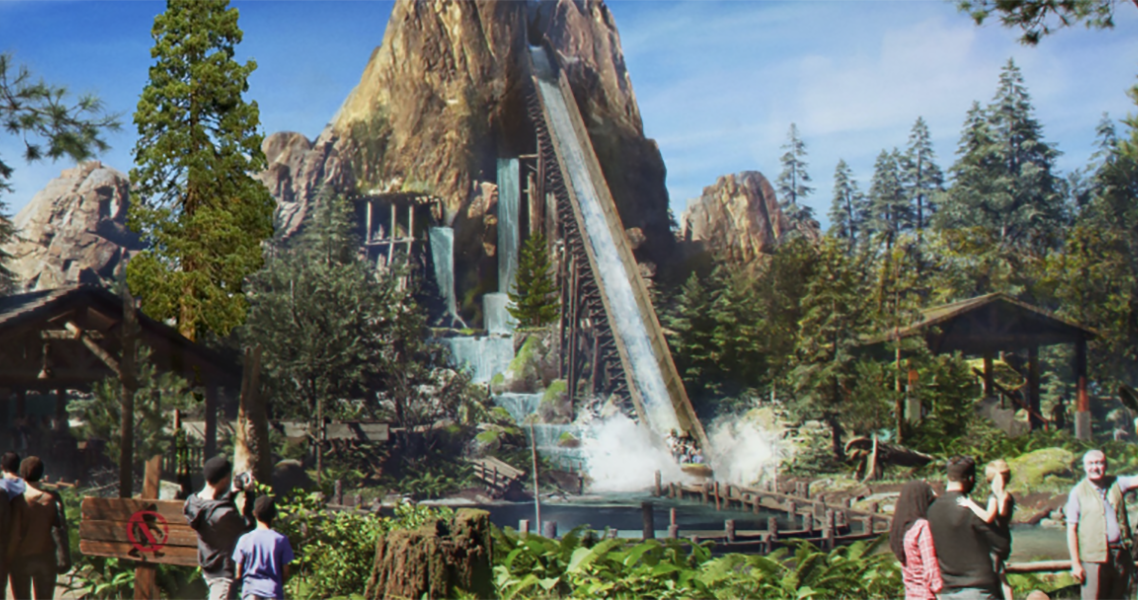Paid subscribers can listen to my audio narration of this article. ART Talks audio: Getting to the heart of the matter
Over my three decades-long career as a theme park journalist, I’ve seen lots–and lots–of proposed parks that never made it out of the gate. Case in point: There have been multiple large-scale park projects pitched around the world that were supposed to partner with and feature Paramount Pictures. The total number that actually got built? Zero.
There’s a good reason for that. It’s not exactly mission impossible. But, considering the massive amounts of money it takes to build a world-class park, siting and permitting issues, creative licensing concerns, competition from existing parks and other diversions, realistic attendance and revenue projections, and many other challenges, the park development game is not for the faint hearted–or for those who favor rose-colored glasses. Should developers survive the guantlet and actually build a property, there’s no guarantee that it will be successful and remain open. (Ahem, Hard Rock Park.)
Even relatively small parks can find the going rough. For example, after adding a modest Thomas the Tank Engine Land in 2015, Edaville in Massachusetts closed the expansion a few years later and now has a truncated operating schedule. Lost Island, a new theme park that opened last year in Iowa, has been having trouble attracting sizable crowds.
That is why I am casting a wary eye at the recent announcement of the $2 billion American Heartland Theme Park and Resort in rural Oklahoma.
It’s not that I’m not rooting for the project’s success. As far as I’m concerned–and I’m sure you’re with me on this–the more parks, the better. It’s just that considering the track record of proposals like these, it’s hard not to be doubtful. The particulars don’t make it any easier to fathom, either.
The eye-popping price tag certainly gives pause. Who will provide the funding, and what kinds of return-on-investment scenarios are the project’s developers providing to them? The 1,000-acre site near Vinita, Oklahoma is far from any sizable metropolitan area. There is already a $350 million park under development near the Lake of the Ozarks in Osage Beach, Missouri, that has a planned 2024 opening and would be about three hours away. It would appear that the park may not incorporate any major intellectual properties (although in fairness, few details have been released). The goal of attracting 4.9 million visitors annually seems quite formidable. That would place it among the top performing parks in the country, ahead of established ones such as SeaWorld Orlando and Busch Gardens Tampa. And the timetable–phase one of the resort is scheduled to open less than two years from now with the phase two theme park planned for 2026–is aggressive.
Still, let’s give the developers, Mansion Entertainment Group, some benefit of the doubt. After all, the company has assembled an impressive team of industry veterans, many of whom have logged plenty of hours working for a certain Mouse, to guide the project. Leading the charge are THG and FORREC, two highly respected attraction design shops with substantial portfolios that include major projects for the likes of Merlin Entertainments, Universal, and Disney.
The planned park would be 125 acres (which, the project’s press release not so subtly notes, is about the size of Disneyland) and would “celebrate the rich cultures and hometown values America has to offer.” Its six lands, which include Stony Point Harbor, the Great Plains, and Bayou Bay, would present the usual mix of rides and attractions. Concept art shows a large wooden roller coaster and at least one steel coaster. There is also a log flume ride that gives off distinct Splash Mountain/Tiana's Bayou Adventure vibes. Upon entering the park, guests would encounter Liberty Village, which appears to take inspiration from Disney’s Main Street U.S.A., complete with a Town Square.
Plans for the first phase feature a 320-acre RV park and campground. With 750 RV hookups and 300 cabins, it would be the largest campground in the central U.S. Along with the theme park, the resort would include a 300-room hotel and an indoor water park in its second phase.

While the site for the park is far from the madding crowd, it is located on the legendary Route 66 and near an interstate highway. Although the plans do not cite any major intellectual properties, it would seem that the company behind the resort has plans to create its own content and synergistic opportunities. According to its Web site, among the nascent divisions under its umbrella are Mansion Animation, Mansion Film and Television, Mansion Studios, and Mansion Sound. The company’s main claim to fame is the Mansion Theatre, which presents concerts by acts such as The Oak Ridge Boys and The Gatlin Brothers and is one of the mainstay performance venues in Branson, Missouri.
I wish the developers and the talented team behind American Heartland all the best and truly hope they prove my skepticism wrong. Taken at face value, the proposed project looks quite exciting. Should it open in 2026, I’d love to be among the first to experience it and would welcome the opportunity to sing its praises.
About Theme Parks reached out to both Mansion Entertainment Group and the design group, THG, for comment about the feasibility and viability of American Heartland Theme Park and Resort, but did not receive a reply.





No comment huh? That’s not a good first sign. I’m with you Arthur, I never hope for anyone to fail, but I don’t see a clear road from them to succeed, especially at the level they are pitching.
I'm going to call you on this one. While I get the red flags, I think the project will happen. There isn't quite a park on this scale in the middle of the country. People will travel to it.